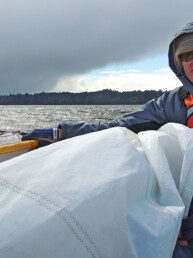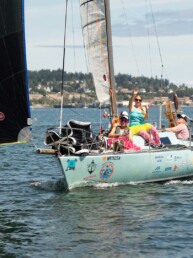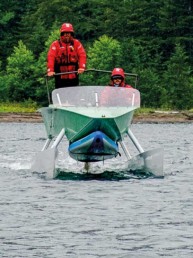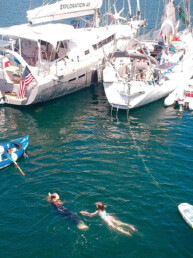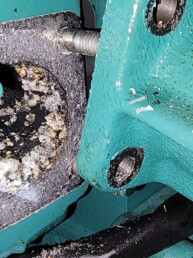Yes, offseason sailing has its rewards on the Salish Sea
Cruising in the offseason isn’t for everyone. But the great thing about the Pacific Northwest is that we can be on the water year-round. Winter adventurers just have to be prepared for the sometimes challenging weather, which can be fickle, and winds and rain can last for days on end.
However, those willing to brave the cold winter weather will have an opportunity to enjoy popular cruising destinations of the Salish Sea with very few other boaters around.
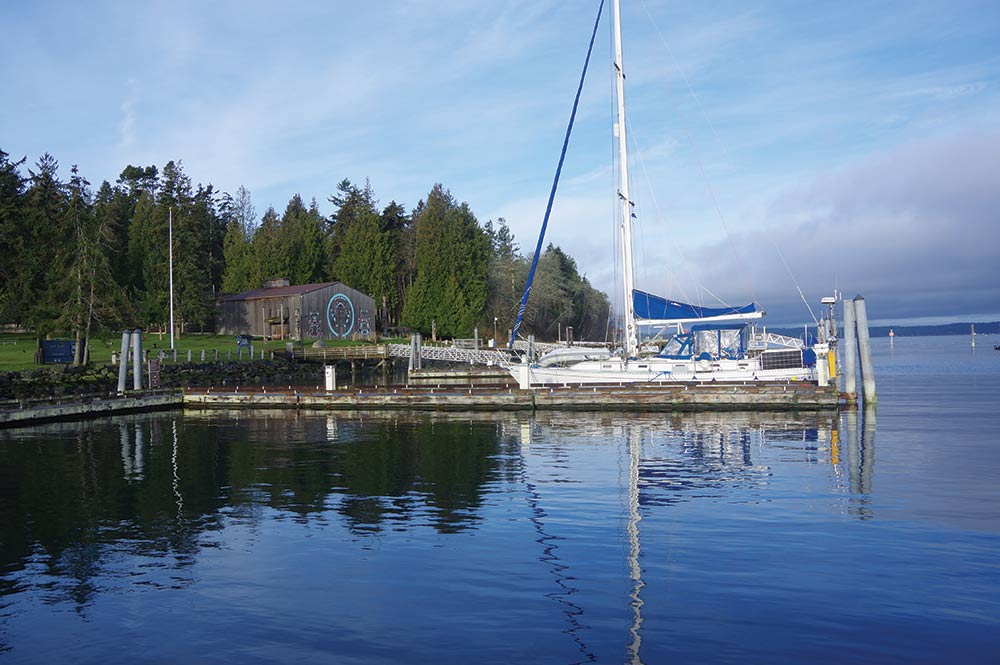
Where to go?
We are fortunate in the Salish Sea because there are so many wonderful winter cruising destinations to tuck into and enjoy. When embarking on a winter cruise, you need to know how much time you’ll have for the adventure, and then you need to decide where you would like to go and what you’d like to do when you get there. A winter cruise does not need to be a long multi-week trip, but weather may dictate when and if you can move.
The joy of winter cruising should not be measured by how far you go. Instead, it should be gauged by whether or not you enjoyed it. Some sailors like to rough it and find the most isolated anchorages. Others like to be plugged in and cozy while in a more developed setting. Fortunately, you can do both in the Pacific Northwest on a winter cruise.
In particular, my wife Heather and I enjoy visiting popular marine parks during the winter months. By visiting the parks in the offseason, we normally can find a dock spot or a buoy at every park we visit. In the wintertime, we have been lucky enough to be the only boat tied to some typically extremely popular Washington state marine park docks.
Washington State has more than 40 marine parks for people to visit. Some have docks that may or may not have shore power, while others only have mooring buoys. Additionally, if you happen to be 62 or older, State Parks has an Offseason Senior Citizen Pass. Keep in mind, though, that some state park docks may be removed for the winter season.
Occasionally, we like to cruise to marinas in areas around Puget Sound that offer the amenities of civilization. There is nothing more enjoyable than stepping off your boat on a crisp winter morning for a stroll up to a warm local coffee shop to get breakfast and a WiFi fix. If urban cruising sounds more like your thing, then you might want to check out winter destinations such as Friday Harbor, Belltown, Eagle Harbor, Poulsbo, Anacortes, Tacoma, Olympia, or other similar waterfront destinations.
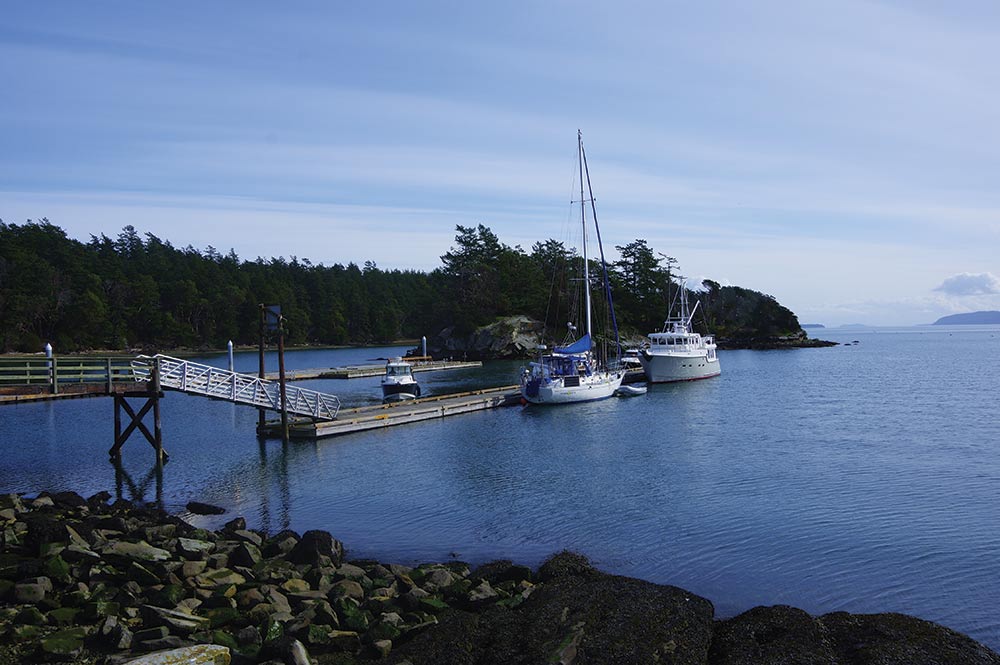
Braving the Elements
The winters around Puget Sound can be cold, windy, and rainy. When the skies open up and a squall kicks up the waves, sailing can be a bone-chilling experience. Not all of us have a nice cozy pilothouse to skipper from, but having a good dodger provides shelter from the winter weather. Having a totally enclosed cockpit, like we do on Nordic Sun II, helps to make cruising in the wintertime quite comfortable.
Another nice thing to have, though not necessarily a requirement for braving the winter weather, is a heat source. It is difficult to overstate how nice a warm cozy cabin is when you come in out of the cold while exploring the Salish Sea. If you plan to go marina hopping, you might only need a portable electric heater that can be run while plugged into shore power. However, if you want to enjoy the quieter anchorages and marine parks then an off-the-grid heat source is invaluable.
Alternate heat sources come in many shapes and sizes. Some run off your engine, which are good when you are underway. Others have a separate heating unit that is run off your engine’s fuel system. These systems can provide heat from forced air, circulating hot water, or can radiate heat from a furnace system. Others might have a propane or wood burning heat source. Regardless of which alternate heat source you might choose, make sure it is in good working order prior to heading out on your winter cruise. There’s nothing worse than getting out there and firing up your heater on a cold evening, only to find that it sputters and fails to provide the warmth you so crave.
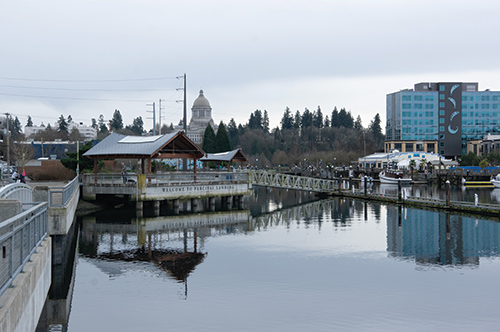
Packing for Winter Weather
To combat the winter elements, appropriate cold weather clothing is a must. Layering is the recommended method, and the one I use, to keep warm. I start by wearing a good quality set of long-underwear that wicks moisture away from the body. For the next layer I wear fleece pants on the bottom and for the top a long-sleeve dry-fit t-shirt with a thin fleece or wool sweater over it. For the outer layer, or layers, there are several good options. It is critical to have at least a heavy foul weather jacket that blocks the wind and cold. Additionally, I use a fleece jacket as one more layer. Sometimes a light shell raincoat will work on those not so cold days. If you have some ski warmups, they make a great outer layer for the legs to keep warm during those cold winter delivery days. You should also always bring extra sets of clothes should the first set get wet.
We all know there can, and probably will, be a lot of rain in the winter months. Having a good set of rain gear and some waterproof boots should be on your packing list. If the boots are insulated, all the better. Check your gear and boots for leaks before you actually need them. Similar to your heater, it’s a significant bummer if you get out there in the wind and rain and realize your gear doesn’t work.
Do not forget to pack a few pairs of wool socks, some gloves, and a wool hat or two. I like to have a pair of fisherman-quality rubber gloves that are fleece lined. These are ideal for keeping your hands toasty warm and dry when you are out trimming sails and anchoring in the rain.
The nights can be long and cold during the winter time. We don’t always have the luxury or want to run our heater 24 hours per day to keep the boat warm. Therefore, we also bring along a couple of extra warm blankets and/or sleeping bags to snuggle under during those nights.

Cabin Fever
Days and nights can seem long while winter cruising. When the winter winds are up and the rains come down, you might find yourself spending more time in the cabin than on a normal summer cruise. To keep cabin fever from setting in, bring along a few of your favorite leisure time activities. We bring a lot of books, board games, cards, and movies to help keep us busy while confined to the cabin. Some of the best memories of past winter cruises are the card game, domino, or backgammon tournaments we have had during those dreary winter hours. I still run across those winter card game scores from time to time, as I flip through our different old logbooks.
Also, if you have a stove and oven that is up to the task, baking and cooking aboard in the winter not only provides delicious meals, it also warms up the boat. Another plus is that onboard cooking can get you off of the boat to find necessary ingredients at grocery stores that you usually don’t frequent.
Similar to getting off the boat for a shopping expedition, winter is one of the best times to go beachcombing. Those big storms that blow through bring lots of different flotsam and jetsam ashore. Being one of the first to walk the beaches for salty treasures that floated in can be rewarding. We’ve been known to bring home a few buoys to add to our collection of nautical yard art
Watch the Weather
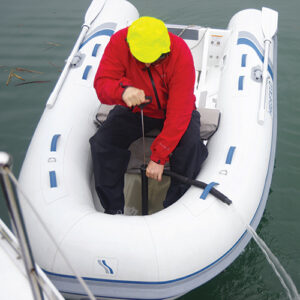
The winter can bring strong, stormy winds, and bad weather. You need to pay close attention to the local marine weather forecast for the area you plan to go winter cruising in. By following the weather closely, you can determine whether or not a winter gale will be coming your way. Knowing what weather is coming helps in making the decision whether to stay put or find a safe haven to ride out any approaching rough weather.
I like to review the weather each evening and morning to determine whether a storm is brewing. I use NOAA and the Canadian government weather forecasts to keep me informed on approaching weather systems. These organizations both put out zoned forecasts that can be found on different VHF weather channels, as well as in textual formats on the web.
Go Winter Cruising!
I personally like to take time in the winter to visit those marinas and anchorages that are typically crowded with boaters in the summer months. The Washington State Parks department has many excellent marine parks that offer buoys and dock spaces for boaters. But that is not to say all winter cruising destinations have to be to a marine park. Being tied to a city dock makes it easy to explore those more urban locations. Urban marina hopping might be just what you need to enjoy cruising in the winter time. Regardless of where you might go and for how long you are gone, one thing for sure is that a winter cruise on the Salish Sea will be a rewarding and memorable boating experience.
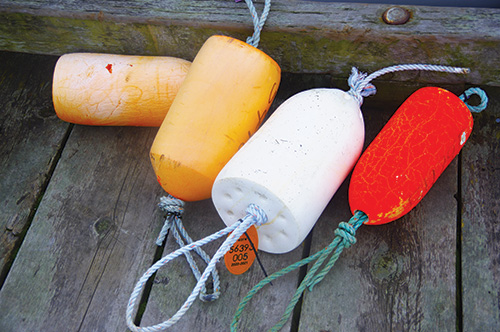
Links to help get your winter cruising adventure started:
- Information about state park moorage fees and what each park has to offer can be found at: https://parks.wa.gov/648/Moorage.
- Offseason Senior Citizen Pass information is available at: www.parks.wa.gov/1205/Off-Season-Senior-Citizen-Pass
- NOAA zoned weather forecasts around Seattle: www.weather.gov/marine/sewmz
- Zoned forecasts for the south coast of British Columbia: weather.gc.ca/marine/region_e.html?mapID=02.
Greg Larsen is a cruiser and racer with a lifetime of sailing experience. He and his family have been cruising the waters of the Salish Sea from Olympia to Alaska for decades.
Greg Larsen
Cruiser/Racer with a lifetime of sailing experience, Greg and his family have been cruising the waters of the Salish Sea from Olympia to Alaska for decades.

